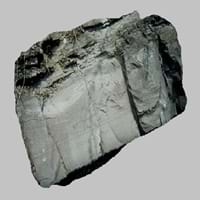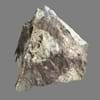Definition
It is a metamorphic magnesium rich rock because it is composed of the mineral talc
A sedimentary rock, deposit of a submarine turbidity currents and are composed of layered particles
Origin
USA
European Foreland Basins
Discoverer
Unknown
Arnold H. Bouma
Etymology
From 17th century, because of its greasy feel and use like a soap
From Medieval Latin turbiditas, from Latin turbidus (turbid). Turbidity current is from 1939
Class
Metamorphic Rocks
Sedimentary Rocks
Sub-Class
Durable Rock, Soft Rock
Durable Rock, Soft Rock
Group
Not Applicable
Not Applicable
Other Categories
Fine Grained Rock, Opaque Rock
Coarse Grained Rock, Fine Grained Rock, Opaque Rock
Texture
Polished
Mud-rich, Sandy
Color
Black, Black to Grey, Green, Grey
Black, Brown, Colourless, Green, Grey, Pink
Durability
Durable
Durable
Appearance
Dull, Banded and Foilated
Dull and Banded
Interior Uses
Bathrooms, Decorative Aggregates, Homes, Interior Decoration
Bathrooms, Countertops, Decorative Aggregates, Flooring, Homes, Interior Decoration
Exterior Uses
As Facing Stone, Garden Decoration
As Building Stone, As Facing Stone, Paving Stone, Garden Decoration
Other Architectural Uses
Curbing
Curbing
Construction Industry
Manufacture of Magnesium and Dolomite Refractories
As Dimension Stone, Cement Manufacture, Construction Aggregate, for Road Aggregate, Making natural cement
Medical Industry
Taken as a Supplement for Calcium or Magnesium
Not Yet Used
Antiquity Uses
Artifacts, Jewellery, Monuments, Sculpture
Artifacts, Monuments, Sculpture
Commercial Uses
Cemetery Markers, Creating Artwork, Gemstone, Jewelry, Manufacture of Soap, Solvents, Dyes, Plastics and Fibres, Production of Lime, Source of Magnesia (MgO)
Cemetery Markers, Creating Artwork
Types
Not Available
Not Available
Features
Host Rock for Lead
High silica content, Host Rock for Lead
Archaeological Significance
Famous Monuments
Christ the Redeemer in Rio de Janeiro, Stonehenge in English county of Wiltshire
Data Not Available
Famous Sculptures
Data Not Available
Data Not Available
Formation
Soapstone is a talc-schist, which is a type of metamorphic rock and it is largely composed of the mineral talc and is thus rich inmagnesium.
Turbidite is a type of sedimentary rock formed when a river carries or transports pieces of broken rock as it flows. These particles then settle down and are subjected to high temperature and pressures hence forming Turbidite.
Mineral Content
Albite, Apatite, Biotite, Calcite, Carbonate, Clay Minerals, Hornblende, Ilmenite, Micas, Plagioclase, Pyroxene, Quartz
Coesite, Quartz, Sand
Compound Content
CaO, Mg, MgO
CaO, Carbon Dioxide, MgO
Types of Metamorphism
Burial Metamorphism, Cataclastic Metamorphism, Contact Metamorphism, Hydrothermal Metamorphism, Impact Metamorphism, Regional Metamorphism
Not Applicable
Types of Weathering
Not Applicable
Biological Weathering, Chemical Weathering, Mechanical Weathering
Types of Erosion
Not Applicable
Chemical Erosion, Coastal Erosion, Sea Erosion, Water Erosion, Wind Erosion
Grain Size
Fine Grained
Fine to Coarse Grained
Fracture
Conchoidal
Splintery
Streak
Black
White, Greenish White or Grey
Porosity
Less Porous
Very Less Porous
Cleavage
Perfect
Disjunctive
Specific Gravity
2.86
2.46-2.73
Transparency
Opaque
Opaque
Density
2.8-2.9 g/cm3
1.6-2.5 g/cm3
Resistance
Heat Resistant, Pressure Resistant
Heat Resistant
Deposits in Eastern Continents
Asia
China, India, Indonesia, Japan, North Korea, Russia, Saudi Arabia, Singapore, South Korea, Sri Lanka, Tajikistan, Thailand
Not Yet Found
Africa
Egypt, Ethiopia, Ghana, South Africa, Western Africa
Western Africa
Europe
Austria, England, Finland, France, Germany, Greece, Spain, Sweden, Switzerland, United Kingdom
Austria, Belarus, Romania, Switzerland, United Kingdom
Others
Not Yet Found
Not Yet Found
Deposits in Western Continents
North America
Canada, USA
Canada, USA
South America
Colombia
Brazil, Colombia
Deposits in Oceania Continent
Australia
Central Australia, New Zealand, Queensland
New Zealand, Western Australia
Soapstone vs Turbidite Characteristics
Though some rocks look identical, they have certain characteristics which distinguish them from others. Characteristics of rocks include texture, appearance, color, fracture, streak, hardness etc. Soapstone vs Turbidite characteristics assist us to distinguish and recognize rocks. Also you can check about Properties of Soapstone and Properties of Turbidite. Learn more about Soapstone vs Turbidite in the next section. The interior uses of Soapstone include Bathrooms, Decorative aggregates, Homes and Interior decoration whereas the interior uses of Turbidite include Bathrooms, Countertops, Decorative aggregates, Flooring, Homes and Interior decoration. Due to some exceptional properties of Soapstone and Turbidite, they have various applications in construction industry. The uses of Soapstone in construction industry include Manufacture of magnesium and dolomite refractories and that of Turbidite include As dimension stone, Cement manufacture, Construction aggregate, For road aggregate, Making natural cement.
More about Soapstone and Turbidite
Here you can know more about Soapstone and Turbidite. The life cycle of a rock consists of formation of rock, composition of rock and transformation of rock. The composition of Soapstone and Turbidite consists of mineral content and compound content. The mineral content of Soapstone includes Albite, Apatite, Biotite, Calcite, Carbonate, Clay Minerals, Hornblende, Ilmenite, Micas, Plagioclase, Pyroxene, Quartz and mineral content of Turbidite includes Coesite, Quartz, Sand. You can also check out the list of all Metamorphic Rocks. When we have to compare Soapstone vs Turbidite, the texture, color and appearance plays an important role in determining the type of rock. Soapstone is available in black, black to grey, green, grey colors whereas, Turbidite is available in black, brown, colourless, green, grey, pink colors. Appearance of Soapstone is Dull, Banded and Foilated and that of Turbidite is Dull and Banded. Properties of rock is another aspect for Soapstone vs Turbidite. The hardness of Soapstone is 1 and that of Turbidite is 3. The types of Soapstone are Not Available whereas types of Turbidite are Not Available. Streak of rock is the color of powder produced when it is dragged across an unweathered surface. The streak of Soapstone is black while that of Turbidite is white, greenish white or grey. The specific heat capacity of Soapstone is 0.88 kJ/Kg K and that of Turbidite is 0.92 kJ/Kg K. Depending on the properties like hardness, toughness, specific heat capacity, porosity etc., rocks are resistant to heat, wear, impact, etc.Soapstone is heat resistant, pressure resistant whereas Turbidite is heat resistant.





